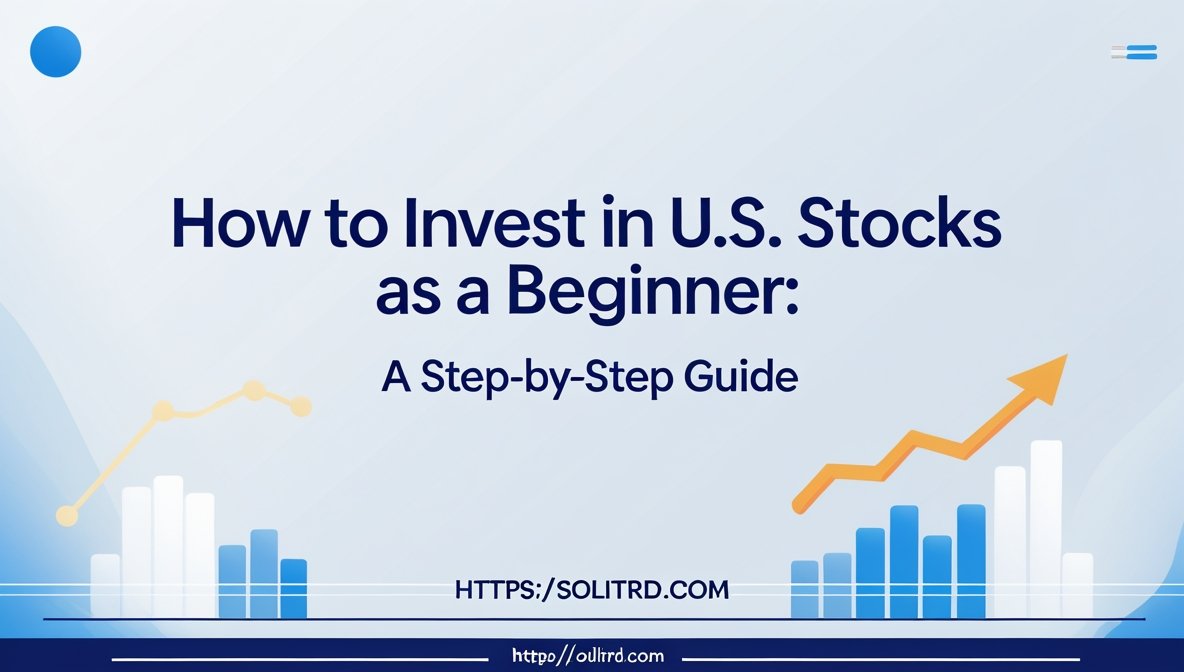How to Invest in U.S. Stocks as a Beginner: A Step-by-Step Guide

Investing in US stocks can make it feel like a huge, exciting world world, but for beginners it can also look heavy. With the right approach, anyone can start producing money through the stock market. This guide will lead you through the imperative to invest in US stocks as a beginning, and offer practical steps, tips and insights so you can help you start with confidence.
Why Invest in U.S. Stocks?
The US stock market is one of the largest and most dynamic in the world, providing access to companies such as Apple, Amazon and Tesla. By investing in stocks, you can create a piece of these businesses and potentially benefit from their development. Historically, the US stock market has yielded an average annual return of around 7-10% after inflation, making it a powerful tool for long -term wealth. For beginners, the key to starting is small, learning the basics and being consistent.
Step 1: Understand the Basics of Stock Investing
The US stock market is one of the largest and most dynamic in the world, providing access to companies such as Apple, Amazon and Tesla. By investing in stocks, you can create a piece of these businesses and potentially benefit from their development. Historically, the US stock market has made an average annual return of around 7-10% after inflation, making it a powerful tool for long -term money. For beginners, the key to starting is small, learning and being consistent.
There are two main ways to make money with stocks:
- Capital gains: Selling a stock for more than you paid.
- Dividends: Receiving regular payments from companies that share profits with shareholders.
As a beginner, focus on learning terms like stock price, dividends, market capitalization, and price-to-earnings (P/E) ratio. These will help you evaluate stocks and make informed decisions.
Step 2: Set Clear Financial Goals
Ask yourself: Why do you want to invest? Your goals will shape your strategy. Are you saving for a pension, a house or child training? Short-term goals (1-3 years) may require safe investments, while long-term goals (10+ years) can handle the fluctuations in the shares.
Decide how much you can invest. A good rule is just to invest the money you don’t need for at least 5-7 years. This provides investment time for the weather market. Start with what you can carry, even if it is only $ 50 per month – more than the increasing amount means something.
Step 3: Build a Strong Financial Foundation
Before investing, ensure you’re financially ready:
- Pay off high-interest debt: Credit card debt with 15-20% interest rates can outpace stock market returns.
- Create an emergency fund: Save 3-6 months of living expenses to avoid selling stocks during a financial pinch.
- Budget for investing: Set aside a portion of your income for regular investments.
Having these basics in place reduces stress and lets you focus on long-term growth.
Step 4: Choose the Right Investment Account
To invest in U.S. stocks, you’ll need a brokerage account. Here are the main options for beginners:
- Taxable brokerage account: A standard account for buying and selling stocks. Platforms like Robinhood, Fidelity, or Charles Schwab are beginner-friendly.
- Retirement accounts: Options like an IRA (Individual Retirement Account) or Roth IRA offer tax advantages for long-term investors.
- Robo-advisors: Services like Betterment or Wealthfront automate investing by building a diversified portfolio based on your goals.
Compare fees, user experience, and educational resources when choosing a platform. Many brokers now offer commission-free trading, making it easier for beginners to start.
Step 5: Learn About Investment Options
As a beginner, you don’t need to pick individual stocks right away. Consider these options:
- Individual stocks: Buying shares of specific companies. This requires research and carries higher risk.
- Exchange-Traded Funds (ETFs): Baskets of stocks that track an index, like the S&P 500. ETFs like SPY or VOO are great for diversification.
- Mutual funds: Similar to ETFs but often have higher fees and are managed by professionals.
For beginners, ETFs are often the best choice. They provide instant diversification, reducing the risk of betting on a single company.
Step 6: Start with Diversification
Diversification means spreading your money in different shares or areas to reduce the risk. Instead of putting all your money into a technical stock, investing in an ETF that has hundreds of companies in industries. For example, the S&P 500 ETF includes top American companies such as Microsoft, Google and Walmart, which gives you broad performance.
A simple strategy is to allocate 80-90% of your portfolio to a wide market ETF and is 10-20% to the individual shares you have believed. It balances safety and development capacity.
Step 7: Do Your Research
If you want to invest in individual stocks, research is key. Start with companies you know—ones whose products you use or admire. Then, dig deeper:
- Financial health: Check the company’s revenue, profit, and debt levels.
- Growth potential: Look for industries with strong future demand, like technology or healthcare.
- Valuation: Use metrics like the P/E ratio to see if a stock is overpriced.
Resources like Yahoo Finance, Morningstar, or your broker’s research tools can provide this data. Avoid chasing “hot” stocks based on hype—focus on companies with strong fundamentals.
Step 8: Start Small and Invest Regularly
You don’t require thousands of dollars to start. Many platforms allow partial shares, which means you can buy a piece of shares like Amazon, as low as $ 10. Enter automated contribution to your account, even if it’s only $ 25 per week. This strategy called the average dollar average helps you buy more shares. When prices are low and low, when prices are high, it does volatility in the market.
Step 9: Stay Patient and Avoid Emotional Decisions
The stock market can be an emotional roller. Prices have daily ups and downs, and the recession is normal. Believe in selling or chasing a trending of a dip. Be aware of your long -term goals and stick to your plan. Historically, the market is upwards over time, and rewards patient investors.
Step 10: Keep Learning and Adjusting
Investment is a lifetime journey. Read books as an intelligent investor by Benjamin Graham or follow the iconic economic blog. Stay up to date on market trends, but avoid sucking in daily news cycles. When you gain experience, you can detect advanced strategies such as options or sector -specific investments.
Common Mistakes to Avoid
- Investing without a plan: Always have a strategy and stick to it.
- Chasing trends: Avoid buying stocks just because they’re popular.
- Ignoring fees: High fees can eat into your returns over time.
- Timing the market: It’s nearly impossible to predict market highs and lows. Focus on consistent investing instead.
Tools and Resources for Beginners
- Brokerage platforms: Fidelity, TD Ameritrade, or E*TRADE offer robust tools and educational content.
- Apps: Robinhood and Webull are user-friendly for beginners.
- Websites: Investopedia, The Motley Fool, and Seeking Alpha provide free insights.
- Books: A Random Walk Down Wall Street by Burton Malkiel is a great primer.
Final Thoughts
Investing in US stocks that begins is about little start, keeping you disciplined and learning as a departure. You can create a solid base for economic development by setting clear goals, choosing the right accounts and by diversity in your investments. The key is to be patient and avoid emotional decisions – time in the market is more important than the time in the market. Start today, even with a small amount, and give your magical power to work over time.
Are you ready to take a dip? Open a broker account, invest in ETFs with low cost, and start the journey for financial freedom. Happy investment!
Solitaire enhances cognitive function by training the brain in strategy and critical thinking. It offers a soothing escape, helping to ease tension and quiet the mind. The game builds patience, focus, and self-reliance. Easy to access and play alone, it’s a rewarding way to pass time productively.






